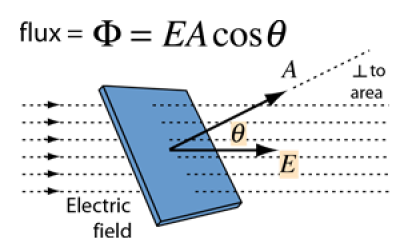Course description
When the area A is used in a vector operation like this, it is understood that the magnitude of the vector is equal to the area and the direction of the vector is perpendicular to the area.
Gauss's Law
The total of the electric flux out of a closed surface is equal to the charge enclosed divided by the permittivity.
The electric flux through an area is defined as the electric field multiplied by the area of the surface projected in a plane perpendicular to the field. Gauss's Law is a general law applying to any closed surface.
Gauss' Law, Integral Form
The area integral of the electric field over any closed surface is equal to the net charge enclosed in the surface divided by the permittivity of space.
Applications of Gauss's Law
Derivation of Coulomb's Law
Ø Consider electric field of a single isolated positive charge of magnitude q as shown below in the figure.
Ø Ø Field of a positive charge is in radially outward direction everywhere and magnitude of electric field intensity is same for all points at a distance r from the charge.
Ø We can assume Gaussian surface to be a sphere of radius r enclosing the charge q.
From Gauss's law
Since E is constant at all points on the surface therefore,
Ø Surface area of the sphere is A = 4πr2 thus
Now force acting on point charge q' at distance r from point charge q is
Ø This is the mathematical statement of Coulomb's law.


















